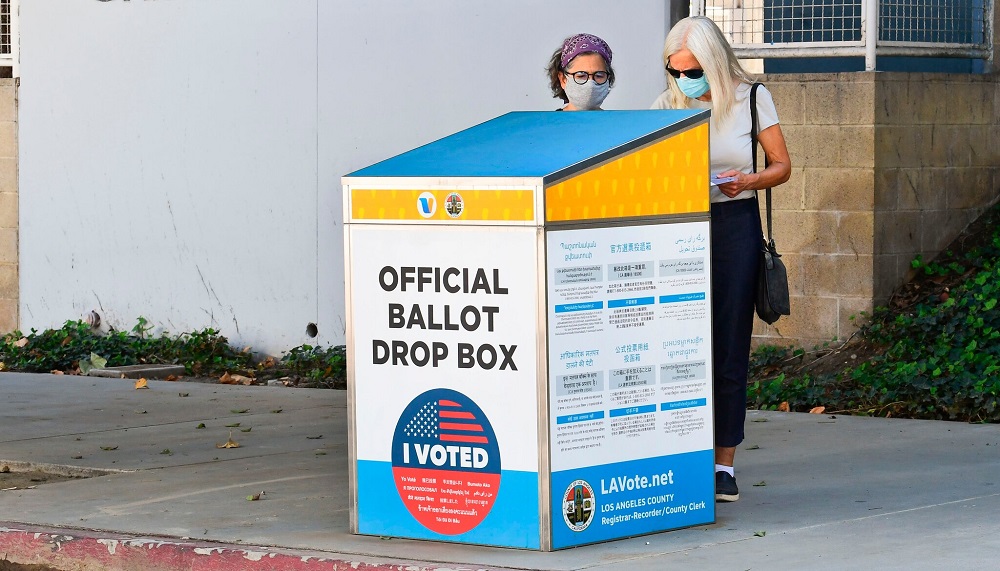
OPINION: This article contains commentary which may reflect the author’s opinion
During the 2020 presidential election, a massive number of voters chose to vote by mail, with over 135 million ballots delivered to voters in that election.
Nearly one quarter of U.S. votes were cast by mail.
The surge was due to the Covid 19 pandemic, but due to the controversy about the 2020 election results, the heretofore untried massive mail-in initiative is being questioned.
Questions abound about both the sending out of the ballots and the receiving of votes by those ballots.
Concerns about the addresses where ballots are mailed include out-of-date mailing information, fraudulent requests, deceased voters receiving ballots, and multiple ballots to the same person/address.
There are two kinds of mail balloting systems: universal vote by mail and absentee balloting.
Some states have both universal vote by mail and absentee balloting.
Other states route the mail votes through the absentee balloting.
Groups that do need absentee balloting include senior citizens, those who are incapacitated, and those who are sick as well as the military. There is no controversy around having those groups vote by mail.
The Practice becomes more controversial when anyone who wants a mail in ballot for the sake of convienence is considered.
The practice of “early voting” is not under scrutiny at the moment.
Some cases of voter fraud from the 2020 election have been documented.
There are claims that ‘research’ shows that mail in ballots do not increase election fraud, however, the 2020 election is the first time such massive mail in numbers have existed, and given the questions regarding the outcome of the election, one election is not sufficient enough trial to make that claim.
The National Conference of State Legislatures submits the following data:
“Eight states allow all elections to be conducted by mail: California, Colorado, Hawaii, Nevada, Oregon, Utah, Vermont, and Washington
Two states permit counties to opt into conducting elections by mail: Nebraska and North Dakota.
Nine states allow specific small elections to be conducted by mail: Alaska, Arizona, Florida, Kansas, Maryland, Missouri, Montana, New Mexico and Wyoming.
Four states permit all mail in elections for certain small jurisdictions: Idaho, Minnesota, New Jersey and New Mexico.”
Former President Trump does not support allowing all registered voters to receive ballots by mail, recently stating that even when ballots are sent to a correct address for a valid voter, ballots can be stolen out of mailboxes.
Trump also charged that anyone, including foreign countries, could print and send in false ballots.
Trump tweeted, “It will be the scandal of our times!”
In August, 2020, The U,S, Postal Service, the government entity charges with the transmission of all these ballots, sent letters in anticipation of an avalanche of ballots to 46 states warning that mail in ballot delay was a distinct possibility, The Washington Post reported then.
It would be assumed that if the rules become more permissive for the upcoming elections, that massive number could certainly explode.
With the current concerns that the Postal Service would be unable to deliver ballots in time for upcoming elections, the USPS is making plans.
The Postal Service says 97.9% of ballots were delivered to election officials within three days during the 2020 election, but they are expanding with a whole new division to handle the ballots for the upcoming elections.
The USPS says that the creation of the division will help the service better respond to issues with election mail in every community.
It seems the Biden Administration is gearing up to receive an enormous amount ballots by mail for the upcoming midterm elections, as the Postal Service announces expansion to handle the flow.
In March, 2022, Biden’s fiscal 2023 budget request included $5 billion specifically to ‘support mail in operations over the next decade,’ Federal News Network reported.
In the report, Federal News Network stated that the money “would fund an expansion of USPS delivery capacity in underserved areas and support for vote-by-mail, including making ballots postage free and reducing the cost of other election related mail for jurisdictions and voters.”
This the seeking of funds by the White House was in addition to “$10 billion over the next decade to provide state and local election officials with a’a predictable funding stream for critical capitol investments and increased staffing and services.’”
This past week, on Thursday, July 28, the U.S. Postal Service announced the creation of a new dedicated division to handle election mail.
With the creation of this new division, it is safe to assume a new bureaucracy is being set up to change the voting habits and requirements of citizens.
The new division, Election and Government Mail Services, is part of an effort to effectively deliver mail-in ballots to voters and elections offices in advance of the 2022 midterm elections, and would assumably be put in place very soon.
“We are fully committed to the secure and timely delivery of the nation’s election mail,” said Adrienne Marshall, the executive director of the new division said.
Source: The Republic Brief